Charles Boswell established his business in London 1872, in Edmonton, at 6 Chappel Place, Upper Fore Street. He moved in 1883 to a more central and fashionable home in The Strand, at number 126, where he stayed until 1921.
Unfortunately, Boswell’s numbering system appears chaotic. Some of his record books survive but the earliest ones do not. Brown suggests the earliest known number for a Boswell gun is 1,539 but the records extant begin in 1897 with number 13,113.
What then to make of this gun? It bears the number 503. The barrel flats are stamped ‘C. Boswell’ and the tubes ‘H.W’ for the barrel maker.
The address on the rib is ‘126 Strand, London, WC’ and the original proof marks include London View, London Provisional Proof, the bore size ’15’ and Definitive London Proof.
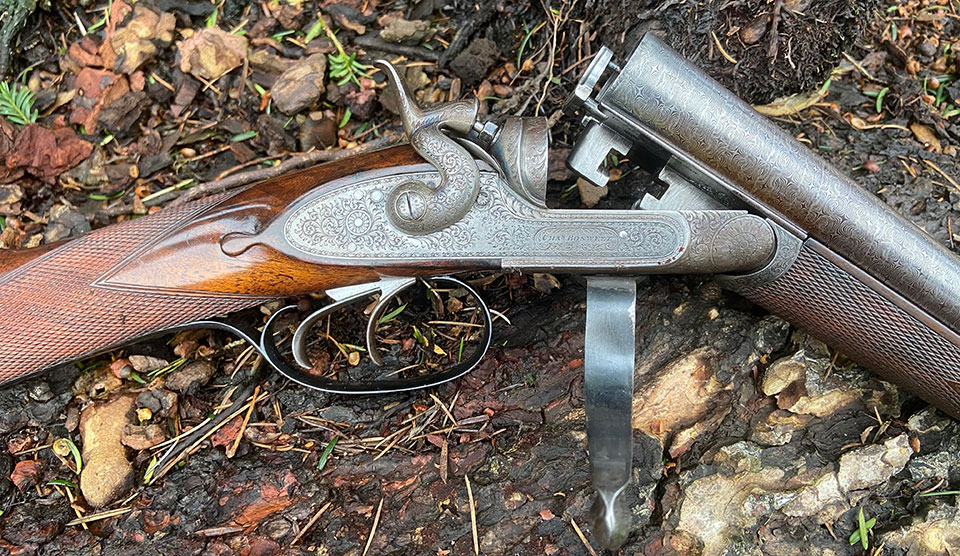
The locks are rebounding but of a style common in non-rebounders, underlining the probable early 1870s origins. The Jones under-lever and screw-grip mechanism was patented in 1859 and was popular well beyond the 1870s, for its strength and reliability but by the 1880s had largely given way to snap actions in higher grade London guns.
None of the proof marks indicate manufacture after 1874. So, how is this possible if Boswell did not move to The Strand until 1883?
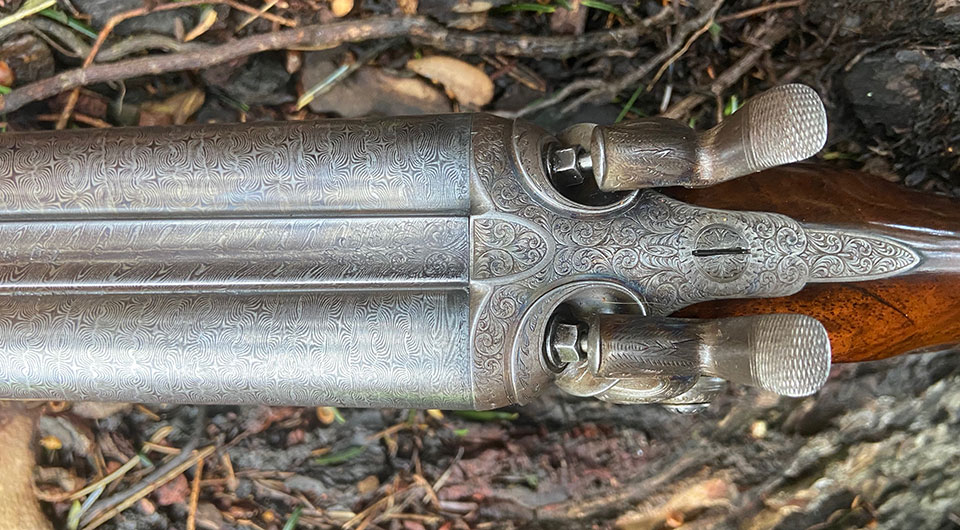
It appears that Boswell recored serial numbers for guns in the order in which they were sold, rather than in the order in which they were made, which makes dating difficult. Th earliest known guns carrying the Strand address are in the 9,000 series and it is thought these were started in Edmonton, so how and why is this ‘Strand gun’ numbered so low? Number 503 suggests a very early Boswell breech-loader.
Looking back at the gun, it is of first class quality. Every detail indicates the best workmanship and the full coverage engraving is very well executed, down to the detailing of the dolphin hammers and the fine bordering on the guard strap.
The serial number appears only on the guard strap, not on the barrels, nor stamped on the action flats, nor the forend iron. Were the number a fitting sequential one for The Strand, say in the 14,000 series, it could be speculated that the gun was was started, proofed and partly made-up in the early 1870s, mothballed, then finished and assigned a serial number ten years later. But it seems odd, if that were the case, to have put a low, out of sequence number on the guard.
Whatever its origins, the gun came my way in 2007 at the Midland Game Fair. It was a bit dusty and was an impulse buy from a small dealer on the last day. It looked quality, the price was tempting and it ‘spoke to me’ as we say. So, I took it home.
I took it partridge shooting a week later. Happily, on the first drive, I was in the hot spot. Unfortunately, after two shots, the cartridges became stuck in the chambers and would not extract. I watched the birds fly over me and bent my thumbnail, delivered a number of expletives, and retired hurt to the gun bus.
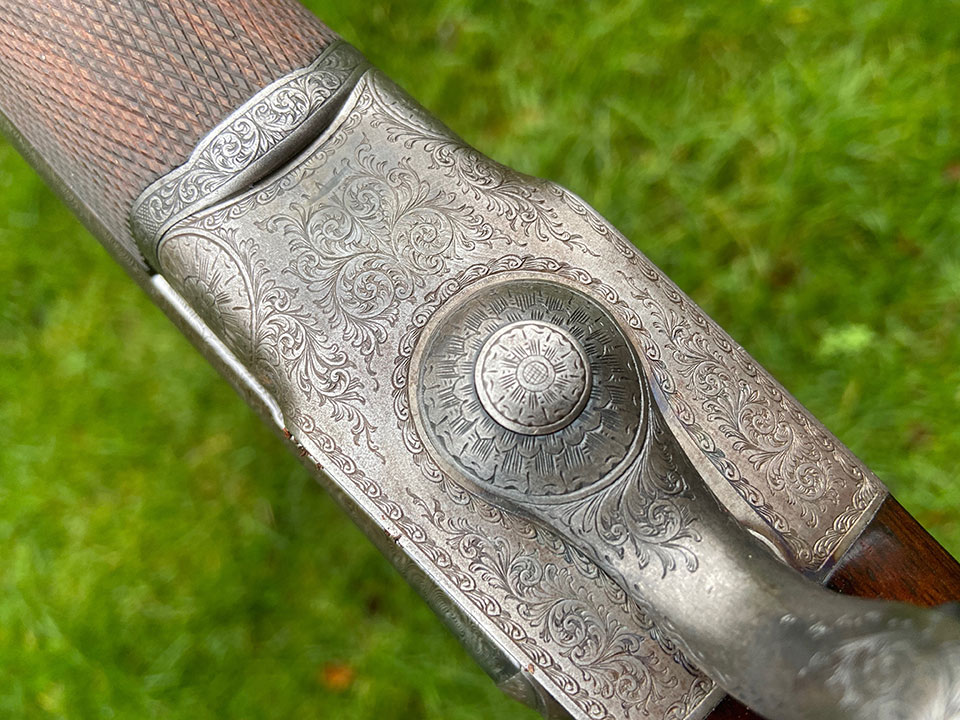
We then discovered that the chambers had been poorly lined; ‘chamber sleeved’ to use the correct term. The sleeves were too long, not properly graduated into the bore and not straight.
That proved to be the greatest challenge (in fact, it took over a decade to get it worked out and completed) but we eventually got there. With new chamber linings installed and a successful re-proof at 65mm and 900 BAR, we were back in business.
The gun responded well to a sympathetic restoration, it had not been hard-used nor badly mangled by country gunsmiths beyond the chamber debacle. With the mechanics fully serviced, guard blacked, stock re-finished and fitted with a leather covered Silver’s pad, it looked as it should. The original barrel browning was a lovely shade and in good order, so we kept it as it was.
A 16-bore is, to my eye, the perfect proportion for sporting gun making. 16-bores look elegant, throw an ounce beautifully and can be made stronger than an equivalent weight 12-bore. When they are of the quality that this Boswell clearly is, they are simply stunning.
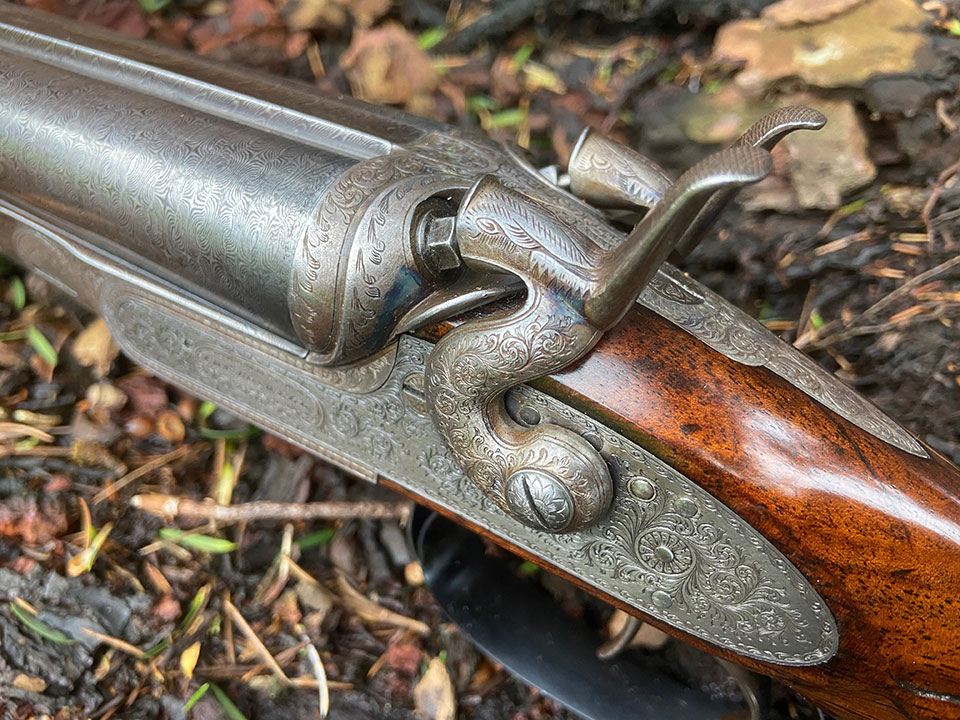
Weighing 6lbs 6oz, with 26 inch barrels, it feels perfectly weighted and has the right combination of fast movement yet reassuring stability that keeps the shooter in control of the swing and the shot, without being hindered by the gun in any conscious way.
Boswell was an interesting character, self-made, from relatively humble origins (his father was a butcher), he rose to a respected position in the London gun trade, with a thriving business, fashionable premises and a reputation as a fine gunmaker, as well as being a skilful live-pigeon trap shooter. He served as Chairman of the Gunmakers’ association in 1906 and 1907.
On the back of his competitive success, he gained a clientele for his live pigeon guns and it is for these he is best known. His Australian agent ensured his export business was a success and Boswell is still respected there as a purveyor of competition pigeon guns, many of which are still in regular use.
Charles Boswell retired in 1914 and his son took over the business, which, like many gunmakers, went into steep decline in the 1930s. He died in 1924.
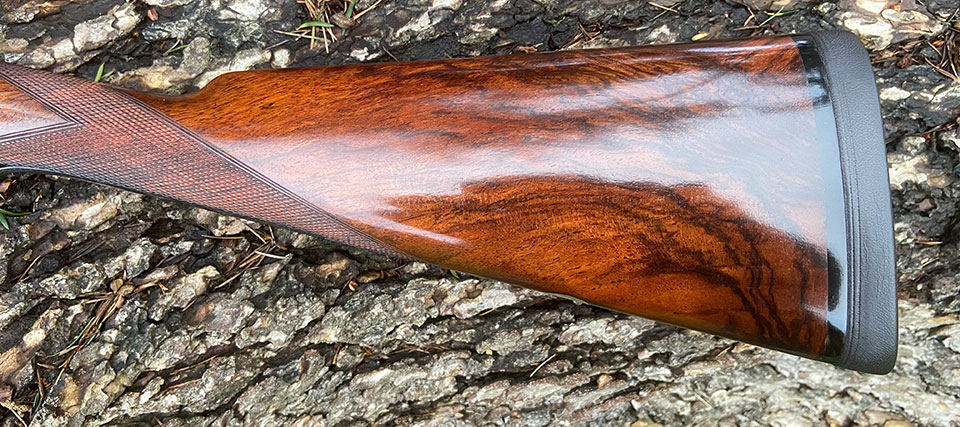
Guns like this, in my opinion, represent the finest in British gun-making, made in a period when everything was done by hand and overseen by the proprietor in a very personal manner. They carry the stamp of their maker, and, I like to think, something of his personality.
I look forward to engaging some pheasants with Charles Boswell’s mysterious 16-bore over the Christmas period.
Published by Vintage Guns Ltd on (modified )




